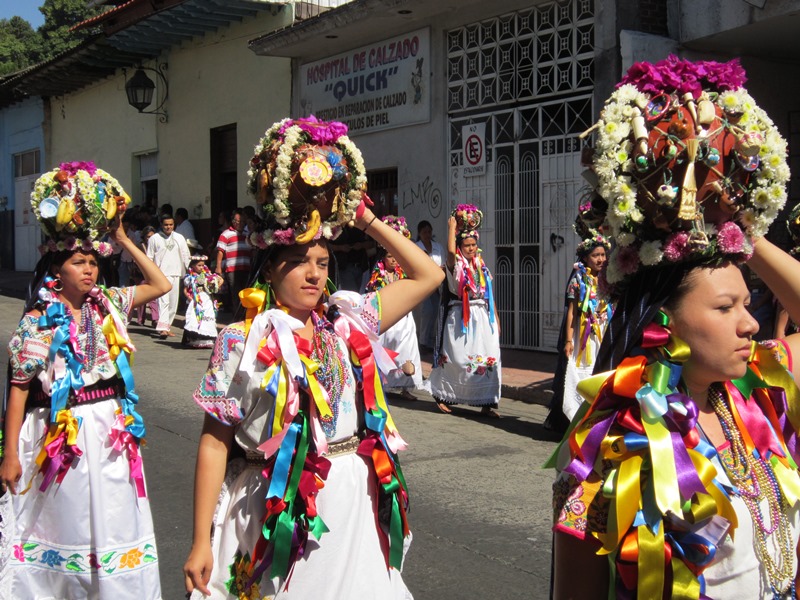For 55 years the artisans of Michoacán have come to Uruapan for the largest event of its kind in Mexico. This year more than 300 came from forty-seven pueblos.
Michoacán handcrafts and folk art is a Mexican regional tradition centered in the state of Michoacán, in central/western Mexico. Its origins traced back to the Tarascan (Purepecha) Empire, and later to the efforts to organize and promote trades and crafts by Vasco de Quiroga in what is now the north and northeast of the state. The state has a wide variety of over thirty crafts, with the most important being the working of wood, ceramics, and textiles. A number are more particular to the state, such as the creation of religious images from corn stalk paste, and a type of mosaic made from dyed wheat straw on a waxed board. Though there is support for artisans in the way of contests, fairs, and collective trademarks for certain wares (to protect against imitations), Michoacán handcrafts lack access to markets, especially those catering to tourists.
During the festivities there are several parades. Most noteworthy are the Desfile (parade) de los Artisans and the Danza de los Aguadores. In the latter more than 500 Purepecha women walk from the Rio de Cupititzio carrying clay jugs if water. Attired in rational costume they walk through the city to the Templo Inmaculada. (Church) There, the water is blessed. Those in the procession are from the nine barrios of Uruapan.(Santo Santiago, La Magdalena, San Miguel, San Pedro, San Juan Bautista, Los Santos Reyes, San Francisco and , La Bautista Trinidad. Watching the parade I counted fifteen “bandas” as I watched the sun hitting the golden tubas as they walked along the main street of Uruapan. A banda is a 10 to 12 member unit with trombones clarinets a tuba, snare and bass drums and of course trumpets. The sounds were of Purepcha music with a very special rhythm.
Two other popular events are the judging and show casing of the winning pieces from the tianguis at the main plaza. This is in the sixteen century Casa de La Cultura and is one of the oldest buildings. The other is the fiesta gastronamia. The Purepecha people set up their food stands at the Plaza Ranita. (At the corner of our street, Corregidora) Here, cooking over wood fires they prepare tasty dishes some that are pre-Hispanic. Always a popular event, people lining up waiting for a seat.
In total there are 90 cultural events at what is the oldest and largest expo of its type in Latin America.
WHERE to STAY: Should you decide to attend in 2016, please check out www.casaserenity1.com La Paz residents, John Glaab and Linda Neil have an historic 16th century home and bed and breakfast, Casa Serenity, just a block from the main plaza where all these events take place.




